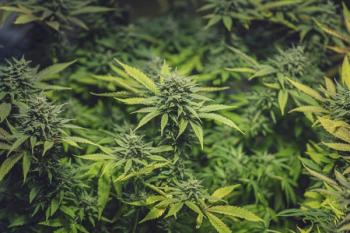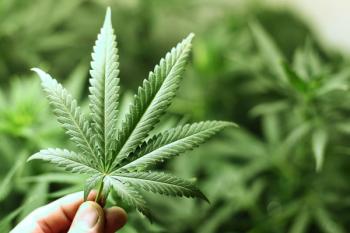
Managing Migraine, Part 1: Reducing Migraine Frequency Through Non-Prescription Measures
More than 37 million men, women, and children in the United States are affected by migraine.
Over 37 million men, women, and children in the United States are affected by migraine,translating into 1 in 4 households.1 Migraine is considered among the 10most disabling illnesses.1 Pharmacists can be helpful in counseling patients on the prevention and treatment of migraine.
Sara Crystal, MD, is a neurologist and headache specialist currently serving as Medical Director for
“Because migraine has many different triggers, it is important to address prevention from multiple angles,” said Crystal. “In addition to pharmacologic therapies, many non-pharmacologic treatments have been found to be effective for migraine.”
Crystal keeps the SEEDS mnemonic in mind when providing lifestyle recommendations for patients. She suggested conveying the following tips to patients:2,3
- Sleep: Practice sleep hygiene to maximize sleep quantity and quality. Sleep on a regular schedule in a dark, cool, quiet room and avoid electronics.
- Exercise: Patients should try to exercise for 30 to 60 minutes 3 to 5 times a week.
- Eat: Eating regular, healthy meals—and avoiding skipping meals—drinking plenty of water, and reducing caffeine intake can help.
- Diary: Patients can track migraine attacks in an app or on a calendar and share this information with their provider. The tech-savvy patient may prefer an app—as migraine apps collect and analyze a lot of data—such as symptoms and severity, triggers, length of migraine, and more. Tracking symptoms can help patients identify certain foods and medicines that may be contributing to symptoms.
- Stress: In addition to methods such as cognitive behavioral therapy, mindfulness, relaxation, and biofeedback, Crystal noted that provider-patient trust can minimize patient anxiety.
Crystal suggested that patients take magnesium, riboflavin (vitamin B2), and coenzyme Q10. And according to a study published in BMJ,4 a diet high in omega 3 fatty acids can reduce migraine frequency. “In particular, the study group that increased dietary omega 3, and reduced omega 6, had the greatest benefit—on average, a 4-day reduction in migraine frequency,” Crystal said.
Another dietary supplement of interest to patients is feverfew. Feverfew may help reduce migraine frequency and symptoms, but results are mixed. Feverfew should be avoided during pregnancy.5
Patients may also ask about butterbur. While it may be effective in preventing migraine, the American Academy of Neurology stopped recommending butterbur in 2015 due to the risk of liver toxicity. Also, some butterbur products contain chemicals called pyrrolizidine alkaloids that can damage the liver, lungs, and blood circulation. Pyrrolizidine alkaloids can also possibly cause cancer. Patients should consult their doctor before using butterbur, and if they do use butterbur, they should only use a product that is certified as pyrrolizidine alkaloid-free.6
A meta-analysis by the United States Headache Consortium concluded that the following methods may be considered to prevent migraine:
- Relaxation training
- Thermal biofeedback combined with relaxation training
- Electromyographic biofeedback
- Cognitive behavioral therapy
Acupuncture may also help to decrease headache frequency. These measures can be combined with preventive medication.7
Patients can also try to avoid migraine triggers, which may include:3,8
- Stress and anxiety
- Hormonal changes
- Bright or flashing lights
- Loud noises
- Strong smells
- Certain medications (such as nitrates, hormonal medication, certain medications used for hypertension)
- Getting too much sleep, or not getting enough sleep
- Sudden weather changes
- Excess physical activity
- Tobacco or caffeine (or caffeine withdrawal)
- Skipping meals
- Migraine medication overuse (from medications such as NSAIDs, opioids, triptans)
Pharmacists can also suggest that patients look at their diet to determine if any of these foods may be contributing to migraine:3
- Alcohol
- Chocolate
- Aged cheeses
- Monosodium glutamate (MSG)
- Certain fruits and nuts
- Fermented or pickled food
- Yeast
- Cured/processed meat
Pharmacists can refer patients to a neurologist/headache specialist for a treatment plan. There may be underlying conditions that are contributing to symptoms as well.
Pharmacists can also compile a list of local support groups to recommend to patients with migraine. Support groups can be found in person and online, although patients should be reminded to only take medical advice from their healthcare provider, not from other patients.
Come back tomorrow for Part 2 of this series, an overview of available prescription preventive therapies.
References
- The facts about migraine. American Migraine Foundation. March 28, 2019. Accessed January 13, 2022.
https://americanmigrainefoundation.org/resource-library/migraine-facts/ - Robblee J, Starling AJ. SEEDS for success: Lifestyle management in migraine. Cleve Clin J Med. 2019;86(11):741-749. Doi:10.3949/ccjm.86a.19009
- Migraine. Medline Plus. Accessed January 13, 2022.
https://medlineplus.gov/migraine.html - Burch R. Dietary omega 3 fatty acids for migraine. BMJ. 2021;374. Doi:10.1136/bmj.n1535
- Feverfew. National Center for Complementary and Integrative Health. Updated December 2020. Accessed January 13, 2022.
https://www.nccih.nih.gov/health/feverfew - Butterbur. National Center for Complementary and Integrative Health. Updated July 2020. Accessed January 13, 2022.
https://www.nccih.nih.gov/health/butterbur - Ha H, Gonzalez A. Migraine headache prophylaxis. Am Fam Physician. 2019;99(1):17-24.
- Medicines that can cause headache. University of Michigan Health. Reviewed February 26, 2020. Accessed January 13, 2022.
https://www.uofmhealth.org/health-library/sig55516
Newsletter
Pharmacy practice is always changing. Stay ahead of the curve with the Drug Topics newsletter and get the latest drug information, industry trends, and patient care tips.
























































































































